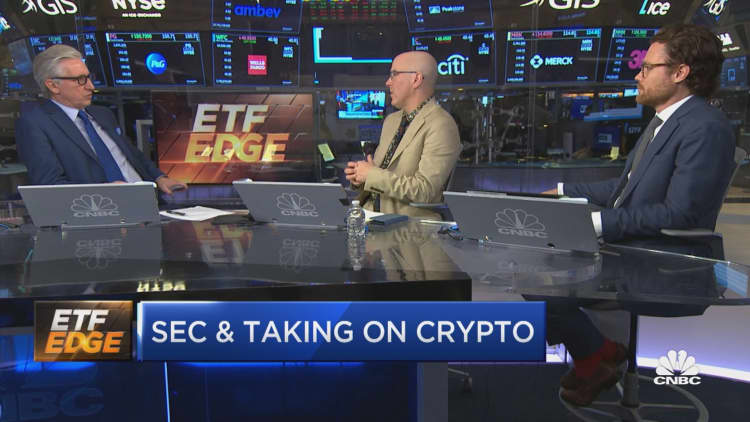
Francesco Carta Fotografo | Moment | Getty Images
When it comes to cryptocurrency like bitcoin, new investors are often motivated by friends to take the plunge, according to a new study.
But that might hold traps for the unwary, experts warn.
“I don’t imagine friends are talking about when they lost money,” said Lee Baker, a certified financial planner and founder of Apex Financial Services in Atlanta.
“The sexy sells,” added Baker, a member of CNBC’s Advisor Council. “The upside sells.
“But folks don’t talk about the downside,” he added.
Nearly a third — 31% — of new cryptocurrency investors in 2022 used a friend’s suggestion as their primary reason for buying in, according to a recent joint study published by the Financial Industry Regulatory Authority Investor Education Foundation and NORC at the University of Chicago. Friends’ recommendations were the No. 1 motivating factor for new crypto buyers.
That share compares with 8% of new investors in more traditional assets like stocks and bonds.
The disparity indicates there is “a social element to cryptocurrency investing not evident in equities or bond investing,” according to the study.
This isn’t to say a friend’s recommendation is necessarily a poor reason to buy into the digital assets.

But it can be a “double-edged sword,” said Gary Mottola, research director at the FINRA Investor Education Foundation and a co-author of the report.
On one hand, crypto can be an on-ramp to more traditional investing — which is generally a good outcome, Mottola said. There’s some evidence of this happening: 36% of new crypto investors said their purchase made them more interested in investing in the stock market, the study found.
However, “the friends recommending [crypto], the sources of information on social media, may not be reliable,” Mottola said.
Trust but verify
The fear of missing out can be a powerful driver of investment decisions.
Bitcoin and other crypto assets rallied through 2021, a record year for the digital assets. Bitcoin jumped from roughly $10,000 in the summer of 2020 to a peak above $68,000 by November 2021.
But the tide turned quickly during a so-called “crypto winter,” when investors lost more than $2 trillion in the year following the market peak.
The sexy sells. The upside sells. But folks don’t talk about the downside.
Lee Baker
CFP and founder of Apex Financial Services
Celebrities, like actress Lindsay Lohan and the rapper Soulja Boy, were recently fined by the Securities and Exchange Commission for undisclosed endorsements of various cryptocurrencies.
“Unless they’re some legitimately knowledgeable financial person, trust but verify,” Baker said of information you may hear from friends or from “pseudo experts” on social media.
One of the dangers of following a friend’s advice: Investors may not understand the risks and volatility associated with crypto (or other investments), or how it fits within a broader, well-diversified investment portfolio, he said.
Another potential trap: You may be getting a friend’s recommendation when the market is nearing its top, when much of the growth potential has already been realized.
Bitcoin’s current value around $30,000 is nearly double what it was at the beginning of 2023. Baker expects he may soon be fielding more phone calls about crypto if the trend continues.
“If you’re doing some investigation [about crypto], I think it’s great,” Baker said. “If you’re just taking information blindly without doing any investigation, that’s a horrible idea.”

